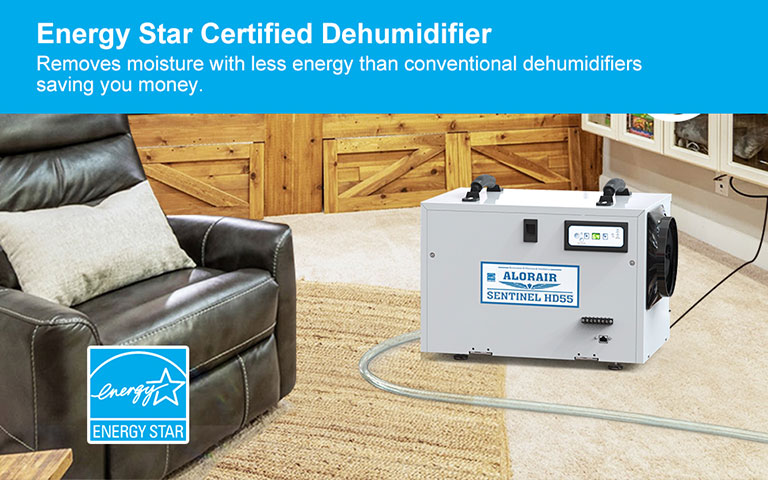What to Look for When Buying a Dehumidifier

Dehumidifiers are commonly needed to keep the environment healthy and dry for people as well as property. Standard air conditioning can take care of controlling moisture in the air for some houses. But even in such houses, there may be separate dehumidifiers needed in some rooms, e.g. the basement. There are various kinds of dehumidifiers available at varying price points. The needs and environments for which people need to use dehumidifiers also vary greatly. Because one size doesn’t fit all, it can be quite a challenge to decide which dehumidifier is best for one’s requirements. In this post, we look at various factors that are important for figuring out your dehumidifier preference.
One of the most important factors to consider is the area of the environment (normally measured in square feet) to be dehumidified. If the area is too big for a dehumidifier, then even the most expensive ones will not be able to effectively control the moisture levels. If the area is too small for a dehumidifier, it can over-dry the environment and might be relatively costlier to run overtime.
Another very important factor is the water removal capacity of a dehumidifier. This is measured in the amount of water removed (in liters or pints) from the air in a particular amount of time (generally measured for a day). The amount of water that can be removed every 24 hours differs from one model to the other. The smaller dehumidifiers may remove around 20 pints of water per day while the larger ones can extract up to 70 pints per day.
The next factor to be considered is the starting level of humidity in the environment. This is the normal level of humidity present in the area being considered, before using a dehumidifier. The higher the humidity, the greater the water removal capacity will be required to effectively reach the preferred humidity levels. While considering the normal humidities, it’s advisable to also look at the source of humidity in the environment. The source of humidity should then be minimized or removed completely, if possible. Having a constant supply of humidity in an environment can render the best dehumidifiers useless.
The above three factors are dependent on each other too and can be considered together. A rough guide to how these factors may be looked at in combination is provided below.
- In an area, less than 2000 square feet, with just a little starting humidity and dampness, a small dehumidifier with a capacity between 18 and 25 pints (per day) should be enough. In the same area, with too much humidity (easily visible signs and the clear smell of wetness), a bigger dehumidifier with a capacity of around 35 pints (per day) would be needed.
- In an area, 3000 square feet, with a little humidity and dampness, a dehumidifier with a capacity of around 35 pints (per day) would be required as the minimum. In case of very high humidities, the capacity of the dehumidifier should be between 40 and 45 pints (per day).
- In areas greater than 3500 square feet, the minimum capacity needed would be 40 pints (per day) and in case of high humidity, the dehumidifying capacity would need to be 60 points (per day) or more.
The next important feature to consider is the energy performance of the equipment. Generally, the more expensive the dehumidifier, the more energy-efficient it is. But this does not always hold. One needs to look at the power consumption of the dehumidifiers in watts, user reviews, and industry certifications. A common way to find this is to look for the Energy Stars qualification.
The remaining factors to consider when buying a dehumidifier are not related to the technical performance of the equipment but are more of personal preference. One such factor is how the water collected by the dehumidifier is removed. In some cases, the water container has to be manually removed and emptied. In other cases, the water can be drained directly using a drain pipe. Some of these dehumidifiers can also pump the water to be drained so that the drain pipe can follow any path and water will be pumped out. The second factor of individual preference can be the availability of handles and wheels for the bigger and heavier dehumidifiers. While smaller dehumidifiers are portable, even the medium-sized ones can be fairly heavy to transport. If portability is an important factor, then the availability of wheels and handles can make a big difference.
These are the factors that should be taken into account when buying dehumidifiers. While some factors and features are technically important, others should also be looked at for suitability for use in different environments. We hope this article helps you in making a better buying decision when looking for the next dehumidifier.




